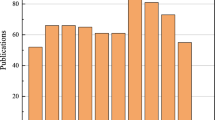Abstract
Over the past few years, many researchers have shown an interest in micro air vehicle (MAV), since it can be used for rescue mission and investigation of danger zone which is difficult for human being to enter. In recent years, many researchers try to develop high-performance MAVs, but a little attention has been given to the wing-folding mechanism of wings. When the bird and the flying insects land, they usually fold their wings. If they do not fold their wings, their movement area is limited. In this paper, we focused on the artificial wing-folding mechanism. We designed a new artificial wing that has link mechanism. With the wing-folding mechanism, the wing span was reduced to 15%. In addition, we set feathers separately on the end of wings like those of real birds. The wings make thrust force by the change of the shape of the feathers. However, the wings could not produce enough lift force to lift it. Therefore, we have come to the conclusion that it is necessary to optimize the wings design to get stronger lift force by flapping.











Similar content being viewed by others
Explore related subjects
Discover the latest articles and news from researchers in related subjects, suggested using machine learning.References
Mueller TJ (2001) Fixed and flapping wing aerodynamics for micro air vehicle applications. AIAA 195:231–248
Sun M, Tang J (2002) Unsteady aerodynamic force generation by a model fruit fly wing in flapping motion. J Exp Biol 205:55–70
Senda K, Obara T, Kitamura M et al (2012) Modeling and emergence of flapping flight of butterfly based on experimental measurements. Robot Auton Syst 60(5):670–678
Okamoto M, Yasuda K, Azuma A (1996) Aerodynamic characteristics of the wings and body of a dragonfly. J Exp Biol 199:281–294
Wang H, Zeng L, Liu H et al (2003) Measuring wing kinematics, flight trajectory and body attitude during forward flight and turning maneuvers in dragonflies. J Exp Biol 206:745–757
Umezu S, Tanabe N, Hashimoto H (2014) Fabrication of comb shape of leading edge wing of dragonfly. Key Eng Mater 625:182–186
Keennon M, Klingebiel K, Won H et al (2012) Development of the nano hummingbird: a tailless flapping wing micro air vehicle. Proc. AIAA aerospace sciences meeting: 1–24
Abe T (2016) Bio-inspired wing folding mechanism of micro air vehicle (MAV). AROB proc
Send W, Fischer M, Jebens K et al (2012) Artificial hinged-wing bird with active torsion and partially linear kinematics. proc 28th Int'l Congress of the Aeronautical Sciences: 23–28
Poetsch G, Evans J, Meisinger R et al (1997) Pantograph/catenary dynamics and control. Veh Syst Dyn 28:159–195
Acknowledgements
This works was supported by the Precise Measurement Technology Promotion Foundation, Urakami Foundation for Food and Food Culture University, JSPS Kakenhi Grant Number 254202224, and Waseda University Grants Special Research Projects (Project Number 2014S-097).
Author information
Authors and Affiliations
Corresponding author
About this article
Cite this article
Jitsukawa, T., Adachi, H., Abe, T. et al. Bio-inspired wing-folding mechanism of micro air vehicle (MAV). Artif Life Robotics 22, 203–208 (2017). https://doi.org/10.1007/s10015-016-0339-9
Received:
Accepted:
Published:
Issue Date:
DOI: https://doi.org/10.1007/s10015-016-0339-9




